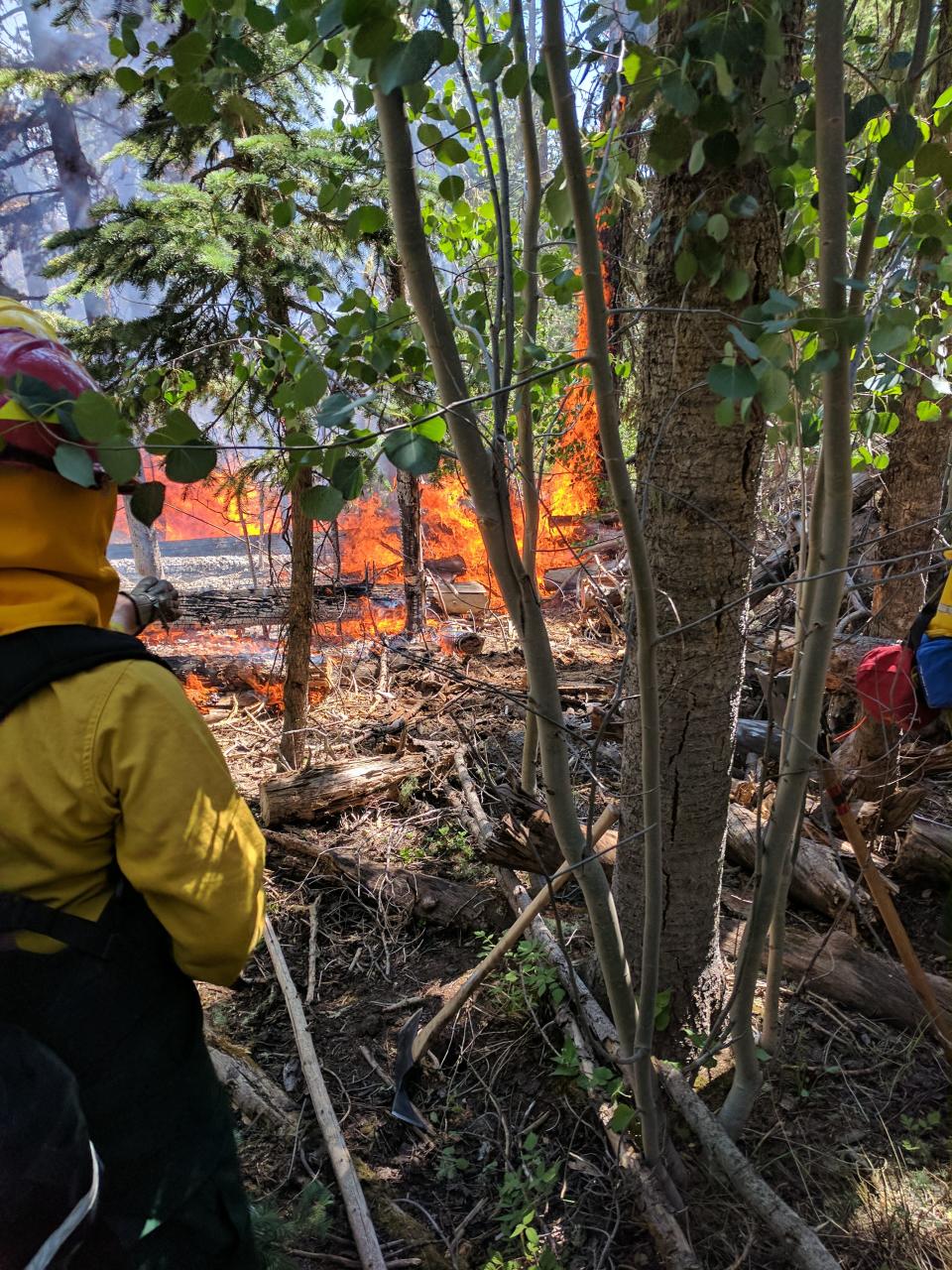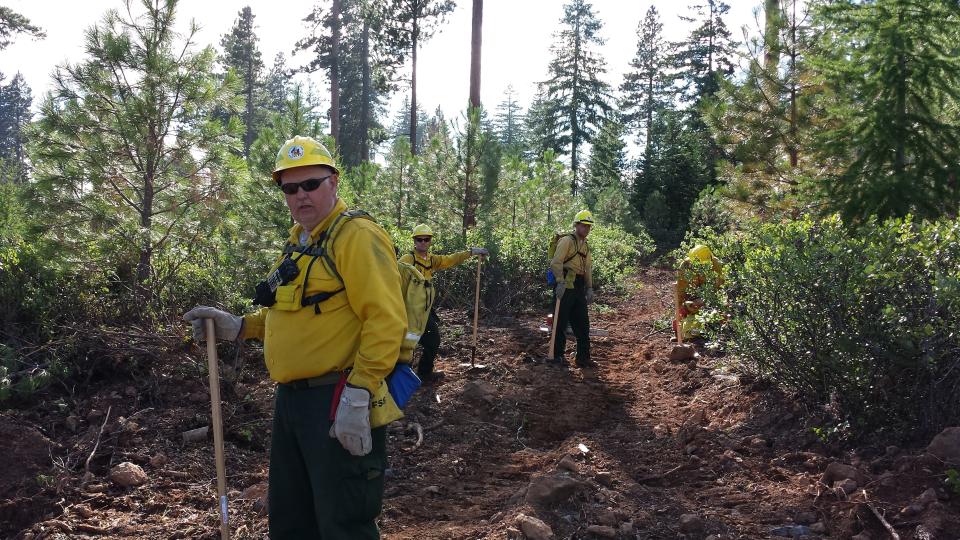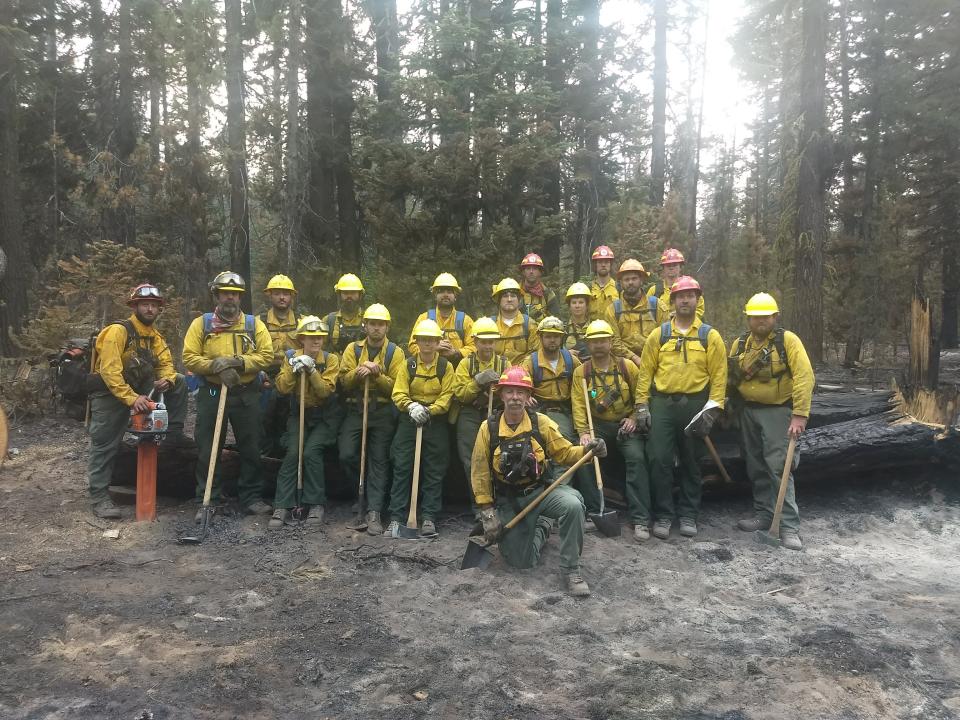Coming to the rescue: Area first responders lend a helping hand
Cambridge Fire Department Assistant Chief Justin Warner is part of a group of Guernsey County first responders who found a new way of giving themselves for the good of people in need.

Those people, in most cases, happen to live some 3,000 miles away.
Warner has made 14 trips since 2002 as part of Ohio teams that travel to fight incidents such as fires, floods, hurricanes or other emergency situations.
Warner was first introduced to the process in 2002 by his father Tom, who is the Lore City fire chief.
"I really had no interest in doing it at first, really just agreed to go that first time to shut up the old man. He had went out on a few trips and came back with all the stories," Warner joked. "But I was halfway through my first trip and had already decided I would be going again. It was just a great experience, working with 20 other guys on your team.
"I actually got to go out with my dad my first few assignments which was really nice for us," Warner said. "So we got to go out together and see some pretty neat things. Like the big trees in California, seeing the big jets doing drops on fires. Just a lot of really cool things we got to experience together."
Other Guernsey County first responders who have been on numerous assignments include Jeff Tucker, a Lore City firefighter, and retired Guernsey County Deputy Sherriff Donald Warnock, Antrim Fire Chief, and Mike Warner, Justin's uncle, who is a Lore City firefighter.
To be eligible to assist in these various emergency situations, individuals must take a training course offered by the Ohio Fire Academy. It's a bureau within the Division of State Fire Marshal, which is responsible for providing training to Ohio’s first responders (firefighters, emergency medical services, and law enforcement).

The mission of the Ohio Fire Academy is to provide fire service personnel and other allied professionals with training, education, and accredited courses that are consistent with nationally recognized standards to improve the safety and proficiency of Ohio’s Fire Service.
"First you take the course to get certified in wildland fire fighting," Warner said. "Then you have the physical requirement which is being able to walk three miles in 45 minutes with a 45-pound weight vest on. So once you complete the class in both those areas, you get put on the eligibility list, noting that you are cleared to go out on an assignment."
Once you are eligible to participate, teams of 20 from around Ohio are formed and wait on their assignment. Most of those assignments are 14 days in length.
Warner explained the individual states which have a need for assistance reach out to the National Inter-Agency Coordination Center headquarters in Boise, Idaho, which oversees the country and is broken into geographical regions.
While on assignment, the group operates under the the Incident Command System (ICS) which coordinates the large scale operations that can be comprised of thousands of individuals. Working under this larger scale, ICS operations have proven helpful in bringing back valuable knowledge to be used in Guernsey County.

The ICS is a hierarchical management system used by governmental agencies, fire, and police to respond to an emergency. It is primarily a field response system but is adapted for use in the Emergency Operations Center (EOC). Devised by the fire service in 1971, it provides guidelines for common multiagency operating procedures, terminology, communications, and management. Its modular structure allows for a consistent and coordinated response to incidents of all types and complexity.
"At any time you could have 3,000 guys or more working at an individual incident," Warner explained. "So using the ICS is just a way to keep everything coordinated and operating at a maximum level. Otherwise you could have different groups doing the same type of work, doing duplicate work and it could just be chaos.
"We use the system here with the Cambridge Fire Department, but just on a much smaller scale of course," Warner continued. "Seeing things done on such a large scale has allowed us to bring back valuable information that has helped us streamline our operations here at home."
Another member of the Cambridge Fire Department, Chief Jeff Deeks, recently returned from his first assignment.
"Hearing all about Justin's adventures kind of peaked my interest so I went over and did the training," Deeks explained. "It was tough for an old man like me. It's a lot of hard, physical work for sure. But I'm really glad I did it, was a really great experience."
kstutton1@gannett.com; 1-330-806-5692.
This article originally appeared on The Daily Jeffersonian: Coming to the rescue

